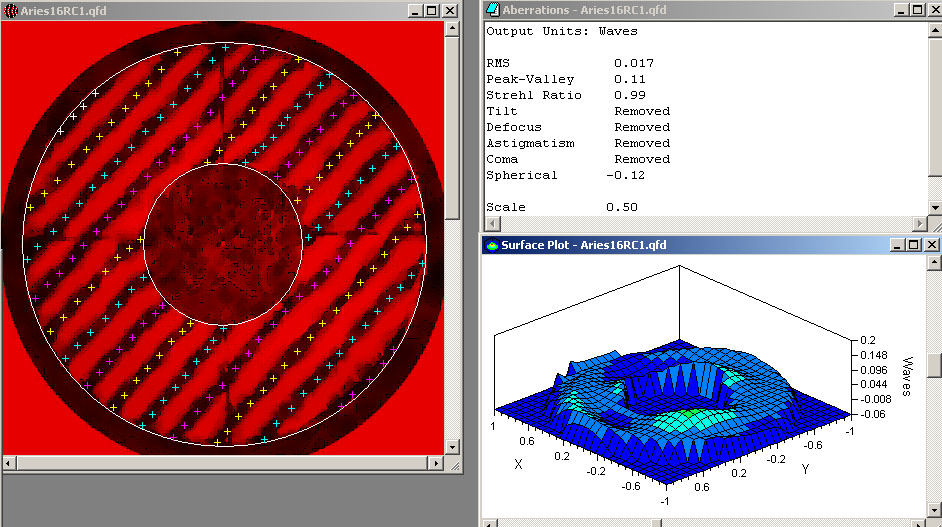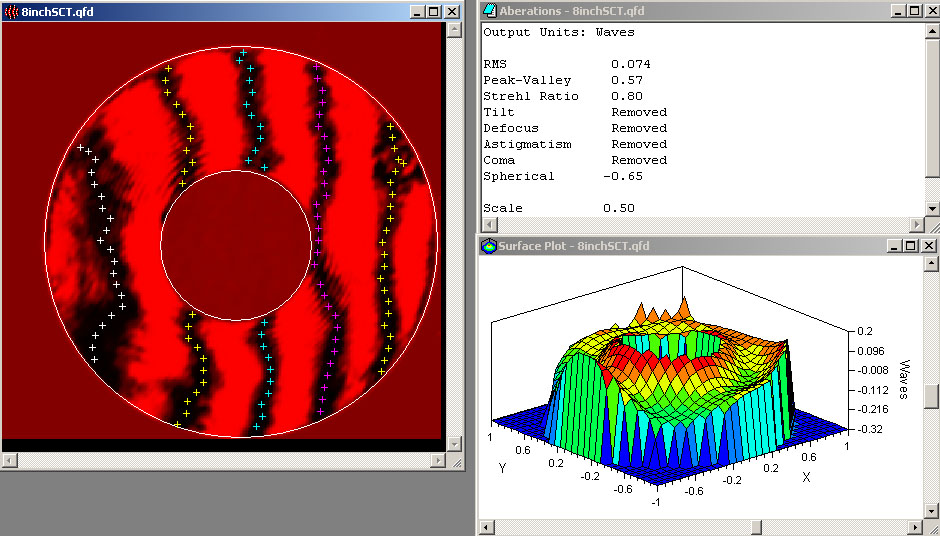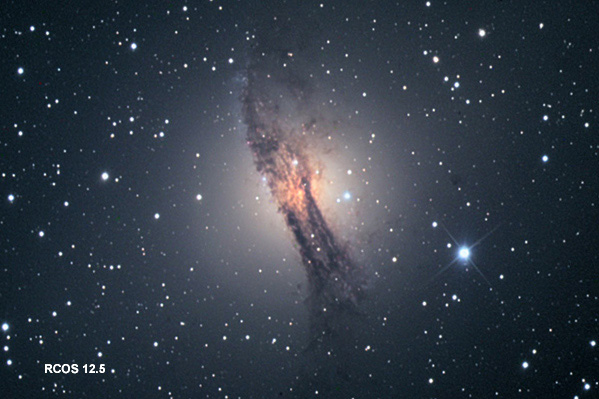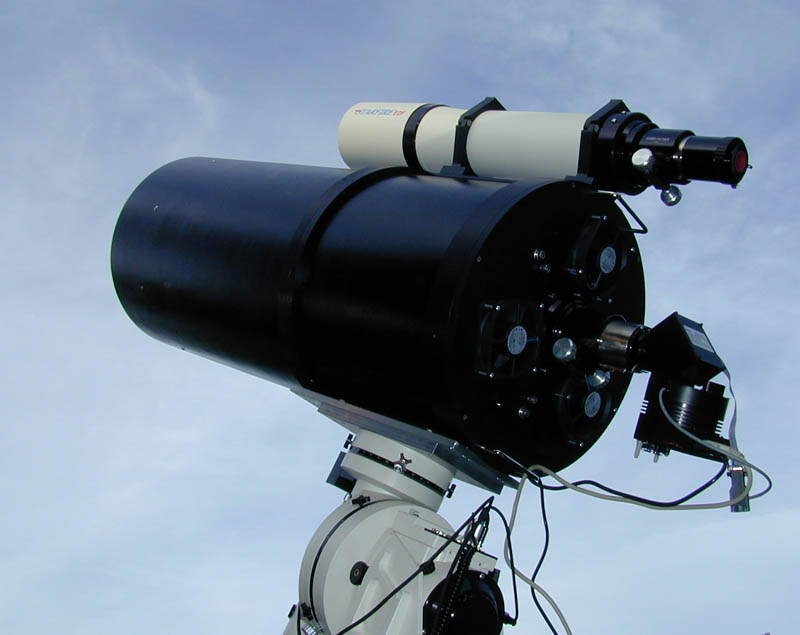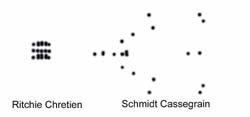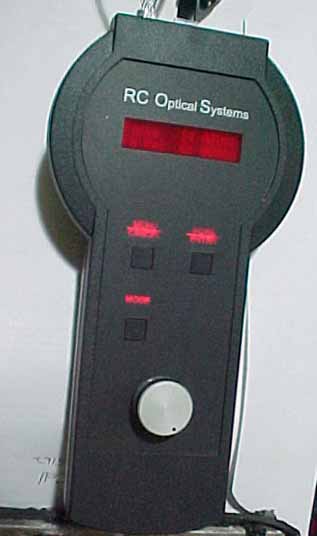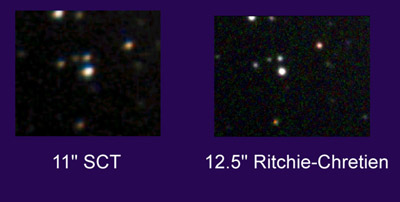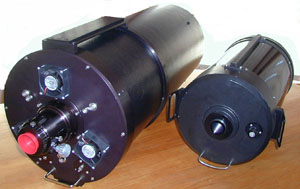- Advanced Telescope Supplies
RC Optical Systems (RCOS) Telescopes Our RC Optical Image gallery is here and you can obtain even more information with RC Optical systems
The RCOS telescope range is a pure Ritchie Chrétien design and is offered in 10", 12.5", 14", 16", 20" , 24" and 32" apertures in user specified F-Ratios.

Pictured above, the RCOS 24" on the RCOS professional mount.
Unlike mass produced telescopes, each instrument is interferometrically tested and certified to a *Strehl ratio of around 93% (or **better) and is manufactured from high stiffness, ultra low thermal expansion materials to ensure this optical perfection is delivered over extremely wide range of temperatures. The result is a telescope that you do not have to battle just to stay in focus, but can consistently deliver research quality images and data.
Amateurs seeking the ultimate in large aperture telescopes should look no further. The super smooth polish and superb correction of an RCOS telescope delivers star images that have a sharp, almost "searing" quality. The optical tube assembly can be easily mounted onto a range of computer controlled German equatorial mounts which can deliver sub arc minute pointing accuracy.
Coupled with an SBIG CCD camera hunting down 20th magnitude asteroids, comets and supernovae are easily within the reach of these superb instruments.
*the Strehl ratio for a perfect optic is 100%. Mass produced SCT's typically deliver about 80%
** RCOS optics can be optionally ordered with Ion-beam figured optics, which are virtually perfect to a molecular level of precision.
Some important Notes on Ritchie Chrétien Optics
Meade Instruments produce an "Advanced Coma Free" telescope. They are clearly not Ritchie Chrétien's. The Ritchie Chrétien design ( inverted in 1910s by George Willis Ritchey and Henri Chrétien, their design is used in many, if not most of the largest professional astronomical telescopes ) uses two hyperbolic mirrors only. The Meade ACF design is a clear step ahead of the standard schmidt cassegrain telescope.
However the correcting plate in their design has off-axis chromatic aberrations which are shown "spot diagrams" below. The polychromatic spot size matrix shown here clearly shows the chromatic error introduced by the addition of a corrector plate. While the spot sizes are significantly larger than a classical Ritchie Chretien, the off-axis performance is superior to a standard Schmidt Cassegrain.
Optical Testing
Optics can be tested in a number of ways, however the only way to obtain an objective and quantifiable measure of a telescopes figure is to use a laser interferometer. Some examples are show below. It should be pointed out that a less than "perfect" optic is not necessarily a bad telescope. As a balance between price an performance an 84% strehl ratio is a good compromise.
Pictured above an inteferogram of a optically certified (inteferometrically tested) mirror.
This optic is for most purposes as perfect as current technology allows. Click on the image for a larger picture.
Pictured above. According to the manufacturer this is a "finest available" or "diffraction limited" optic, but it has not been inteferometrically certified.
The interference fringes should be straight and evenly spaced. This is not an excellent optic and shows nearly a 1/2 wave of spherical error. Click on the image for a larger picture.
Still not convinced? Roll your mouse over the image below to compare an RCOS 12.5" to a Celestron 11" SCT. The C-11 image had more than 50% extra exposure with an SBIG AO7 adaptive optics unit. The RC still shows better correction and fainter stars across the entire image field.
|
|
|
|
|
Simply put, most large professional telescopes are Ritchie Chretiens!


